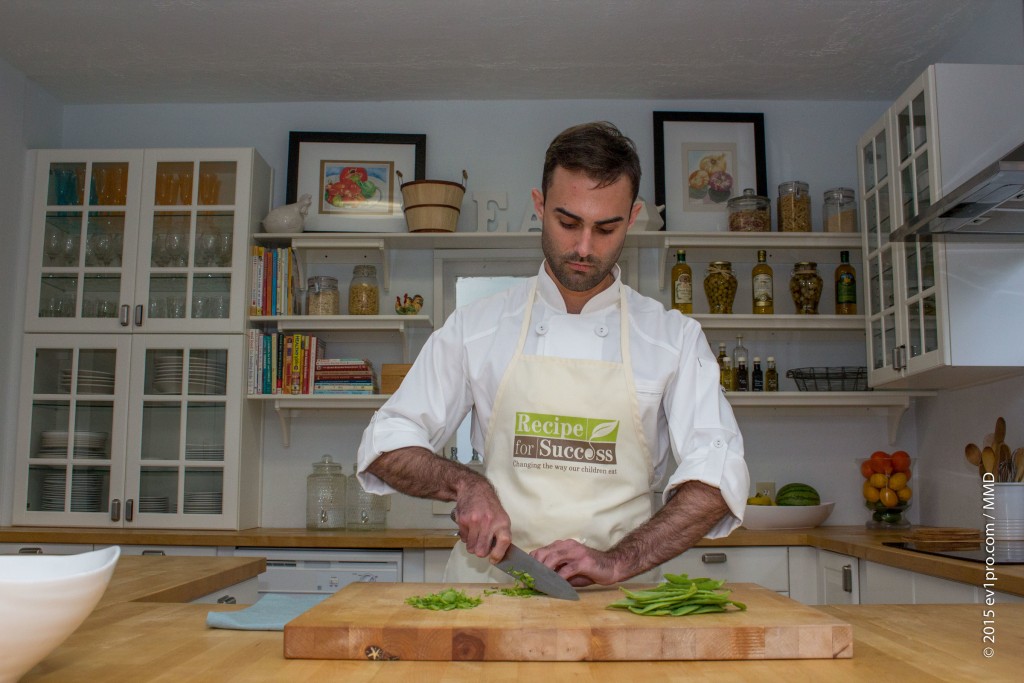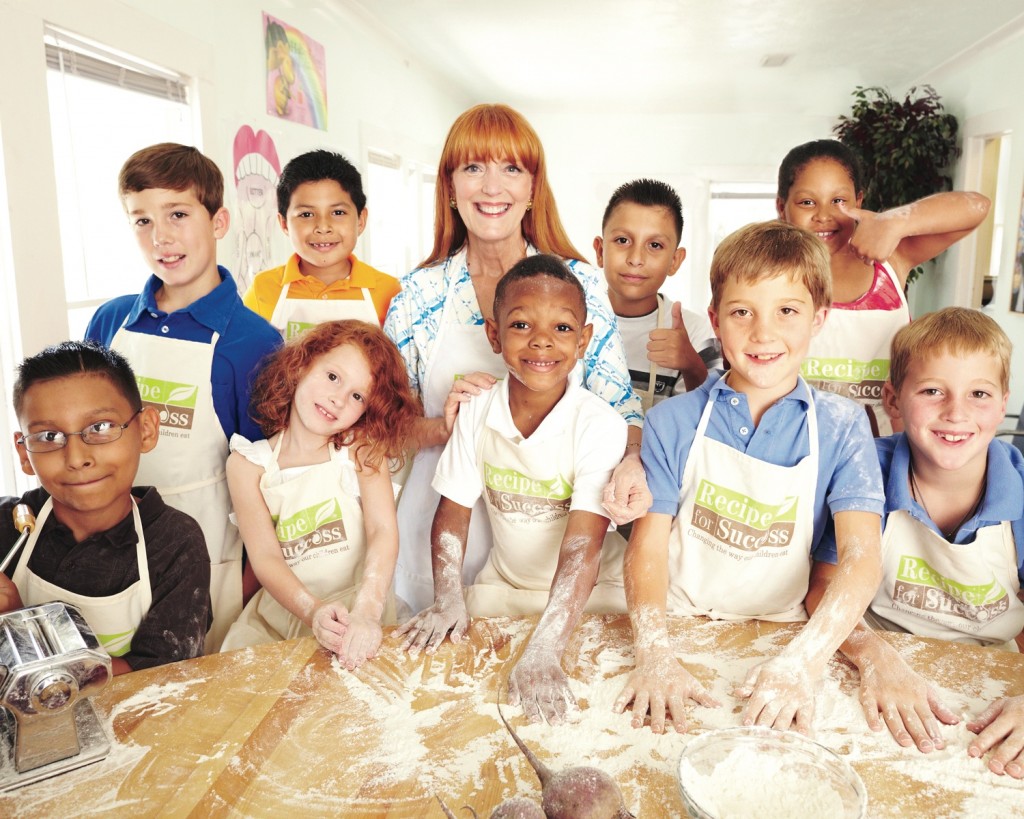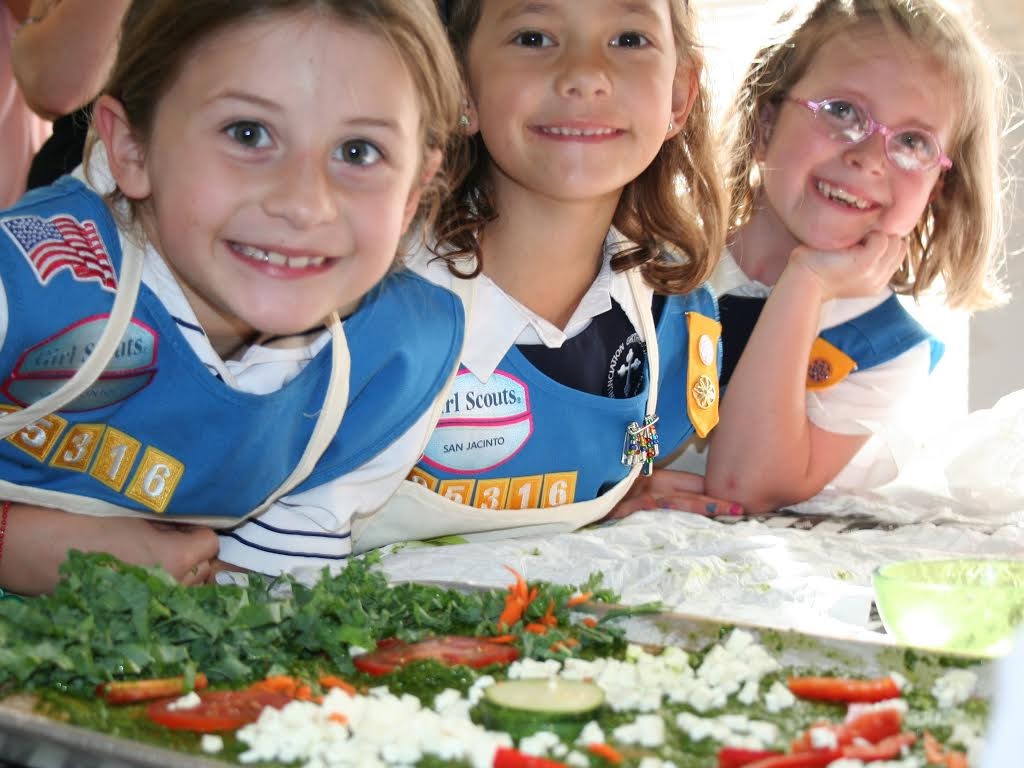Tweaking the Ingredients: Recipe For Success Turns Up The Heat On Plans To Market Healthy Eating

Justin Kouri, culinary coordinator for the Montrose nonprofit Recipe for Success, has just taught 15 fourth graders to season, stir-fry, and garnish Japanese soba, a food they’ve heretofore not heard of. Now he watches them circled, family-style, at a table, slurping their handiwork. Miraculously for this age group, every child tries a bite.
“Thumbs up or thumbs down?” Kouri asks when they’re done.
It’s hardly a traditional ending for the kind of healthy meals that Recipe for Success wants to foster. But the post-meal vote is one of many secret weapons deployed by the group, which is devoted to showing that healthy, sociable eating is fun.
Glorifying the individual – having it your way – has been one of the golden marketing strategies of the fast-food industry. Now, Recipe for Success is determined to use whatever marketing tools it takes to make healthy food as enticing to Houston kids as McNuggets.
In a shabby-chic dining room on Yupon Street, Kouri is deliberately slicing a melon. He has been with Recipe for Success for only two weeks, and his home base is this half-kitchen, half-dining room, where every month a different local celebrity cooks an intimate fundraising dinner.
Kouri, 30, is a study in movie-star symmetry, with inky hair and an impeccable white smile. His apron is blinding. Below the cuffs of black pants he wears black Oxfords, all the more dashing for an absence of socks.
Such personal flair would be irrelevant for most professional chefs. But Kouri, who has cooked in a Michelin starred restaurant in Manhattan and styled meals for the Food Network, was recruited for more than his knife skills. Already flourishing, Recipe for Success wants to heighten its marketing flash, and for that a little glamour doesn’t hurt.
”I’m here to do more fundraising dinners, bring in more money from donors, reach out to other chefs to see how they can be involved,” Kouri says, calmly placing the melon rinds into a white bowl. “And I recently passed Recipe for Success’s seed-to-plate instruction program, so I am an instructor too.”

Founded ten years ago, Recipe for Success is the creation of Gracie Cavnar, a flame-haired Houston architect turned public-relations executive. In the mid-1990s, Cavnar began reading reports about how almost 50 percent of Houston fourth graders were overweight. Appalled, she researched ways to short-circuit the trend. Children’s eating habits, she learned, were pretty much formed by the age of 11.
The mother of three now-adult children, Cavnar came up with a plan to teach kids themselves how to cook healthy meals – on the way incorporating language, math, and science skills. Later, she would weave in another signature activity: teaching children how to grow the vegetables that they eat.
In 2005, Cavnar launched Recipe for Success. No stranger to making connections, she convinced 47 of Houston’s best-known chefs, among them Café Annie’s Robert Del Grande, t’afia’s Monica Pope, and REEF’s Bryan Caswell, to teach classes. Andrea White, wife of then-Mayor Bill White, threw Cavnar’s first fundraising gala.
Since then, Recipe For Success has become the nation’s biggest school-based program to teach healthy eating. In the past decade, 30,000 area children have taken part in its programs. Thirty local schools now offer its year-long classes. Recipe for Success Press has published a cookbook and online, mobile, and broadcast materials. And, sprouting from Cavnar’s love of gardening, a project called Seed-to-Plate Nutrition Education, a research-based gardening and cooking program, is offered every year, and funded entirely by Recipe for Success, at four low-income Texas public schools.
In 2010, Seed-to-Plate training materials went online. Now, “affiliates” around the country can lead cooking and gardening classes at their own schools, and download more than 350 chef- and child-tested recipes for delicacies from focaccia to salad dressing.
According one independent study, students who have been through one year of Recipe for Success’s school program can recognize 30 percent more vegetables than when they started. It’s a small, but crucial first step in teaching at-risk children that there are food groups beyond burgers, soda, and chips.

“At the soba class I just taught,” Kouri says, sliding perfect watermelon chunks onto a plate, “no one believed that carrots come out of the ground.”
That’s one reason why, despite prizes, national media attention, and its status as a darling of Houston foodies, Recipe for Success is always hunting for new ways to imprint its message on children’s psyches.
“We fight marketing with marketing,” Cavnar likes to say. The ultimate goal, she maintains, is to saturate the community with the message that healthy food is fun.
As part of this saturation campaign, Recipe for Success has plans for a van-based “rolling green market,” that would purvey fresh vegetables to food deserts such as Sunnyside. And in a touch meant to sweeten the mood of potential funders, the organization has ensured that its Seed-to-Plate lessons line up with the learning objectives of TEKS (Texas Essential Knowledge and Skills), the state standards for what students should know and be able to do.
Kouri, for his part, will update Recipe for Success’s kid-approved recipe archive. These recipes, available in the nonprofit’s prize-winning cookbook Eat It!, already look toothsome: ravioli with fresh herbs, asparagus risotto, tzatziki. But, Kouri says, it’s good marketing to keep current.
“Food trends affect kids too,” he says. “In the 1990s, everyone was cooking with pink peppercorns. They didn’t have a special flavor, but they were the fashion. Now no one uses them. Right now we’re bringing more vegetables into the fold.”
Melon sliced, Kouri starts in on a pineapple as he explains how he himself first learned about healthy food. “I grew up in Cleveland,” he says. “My father is a very good cook. He’s of Lebanese descent, and he wanted to achieve the kind of food he grew up with.” But, he says, his father didn’t grow up in a kitchen – instead, he was one of the Americans influenced by the avalanche of cooking shows in the 1980s.
It was Kouri’s first lesson that presentation and marketing could have as much influence on people’s eating habits as what they learn at home.

This summer, Kouri will apply this principle full-force at Eat This!, Recipe for Success’s summer camp, where campers will learn to cook treats from energy bars to flavored popcorn. Much as he did at the soba class, Kouri will make sure the students grasp that eating is a social tradition. “I want to show them that eating is more than the food itself, that there’s a culture of eating, of sitting together,” he says.
But the summer kids will also learn a more recent component of eating: how to sell. They’ll be developing a product for Revival Market, the four-year-old Heights-based grocery/butcher shop that focuses on locally produced and sourced food.
“As part of the class, the manager of Revival will come in and talk about marketing” Kouri says. “The students will compare a product like Fruit Loops, and its packaging, with a cereal from Cascadian Farm, which makes organic food. They’ll talk about the ingredients, the colors on the box, and the message it sends. Then they’ll choose what they want to create – sweet? salty? crunchy? – and make the same decisions about their product. That product will then appear on Revival Market’s shelves.”
Kouri places pineapple peel in the bowl with his melon rinds, somehow making the scrap assemblage into a still life. He slides neat pineapple squares onto a platter. “When you think something is perfect, it’s time to change it,” he muses. By the same token, you never know what ingredient of persuasion might make a child raised on fast food develop a taste for kohlrabi. It could be stylish presentation. It could be the sensation of pulling the vegetable from the ground, or of cooking it himself. Or, as the fast-food industry knows well, it might be relentless urging.
“It takes up to 14 tries for a child to get used to a new food,” Kouri says. That, he adds, is why Recipe for Success encourages parents to use the one-bite rule – you have to try at least one bite of something new.
Persist enough, Kouri says, and healthy food can have the same effect on kids as the food they see on TV. One such episode, which happened before he arrived, has become a Recipe for Success legend. “There was a kid who didn’t eat even one of the foods for an entire three years of classes,” Kouri says. “And then one year they made healthy chicken nuggets. He tried them! The other kids’ jaws dropped.”
First the boy tasted. Next he gobbled. Then he lifted his hands.
Thumbs up.
